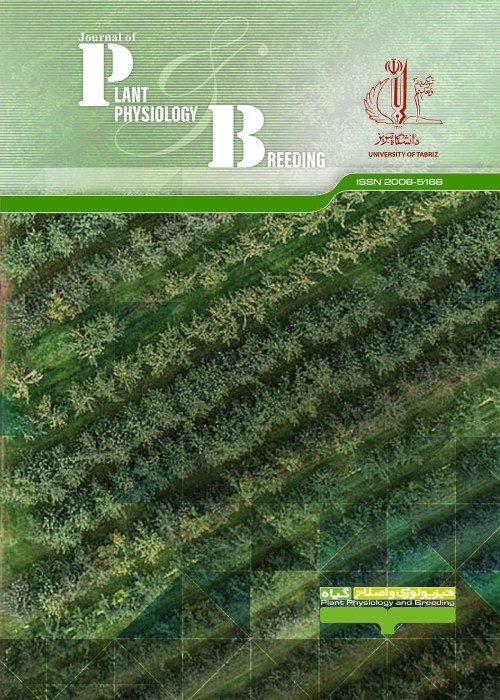Callus Induction and Shoot Regeneration Using Indole Acetic Acid and N-Isopentenylamino Purine Combinations and Two Types of Explant in Tomato
Author(s):
Abstract:
Effects of different concentrations of IAA (0, 0.3, 0.6 mg/l) and 2ip (0, 0.3, 0.6, 0.9, 1.2 mg/l) and their combinations on callus induction and shoot regeneration of hypocotyl and its thin cell layer (TCL) explants in tomato was studied. Explants were prepared from hypocotyls of seedlings in the aseptic condition. Hypocotyl segments were more efficient than TCL explants for callus induction and it was occurred on the 96.0 percent of hypocotyl explants as compared to 76.5 percent of TCL explants. The mean diameter of formed calli on the hypocotyl explants were significantly more than TCL explants. The calli on hypocotyl explants were more regenerative than calli produced on TCL explants and 60.1 percent of calli produced on hypocotyl explants developed the shoots while the regenerated shoots from the calli of TCL explants were 21.45 percent. Percentage of shoot induction on TCL explants was maximum (47.44 percent) in the medium containing 0.3 mg/l 2ip and 0.6 mg/l of IAA. Explant typehad significant influence on the shoot number per callus. Calli developed on TCL explants regenerated more shoots significantly than hypocotyl explants. The recorded shoot number per callus of TCL and hypocotyl explants were 6.45 and 3.22, respectively. The mean length of developed shoots on the hypocotyl segments was significantly higher than that of TCL explants and maximum length of shoot was obtained on the medium containing only 0.3 mg/l IAA.
Language:
English
Published:
Journal of Plant Physiology and Breeding, Volume:5 Issue: 2, Summer-Autumn 2015
Pages:
41 to 50
https://magiran.com/p1707330


